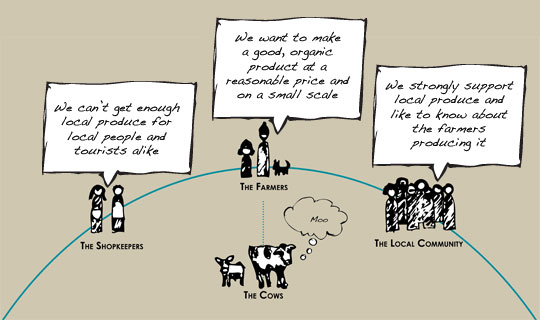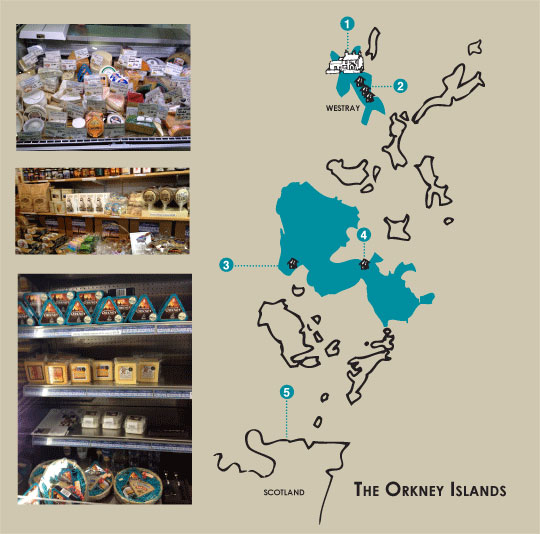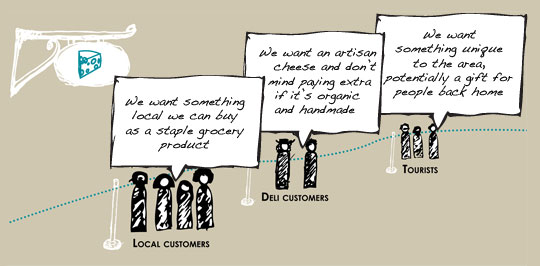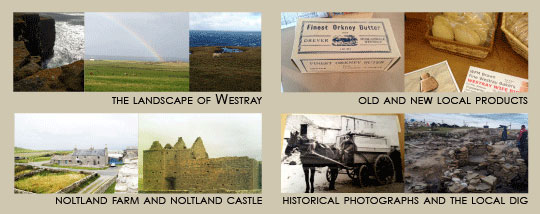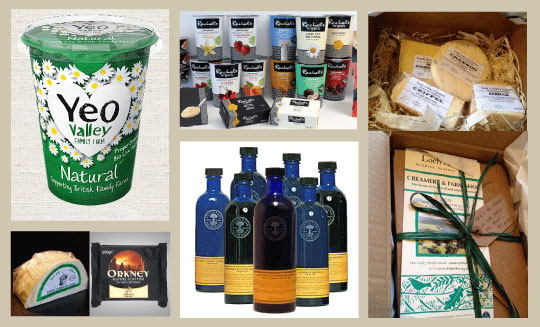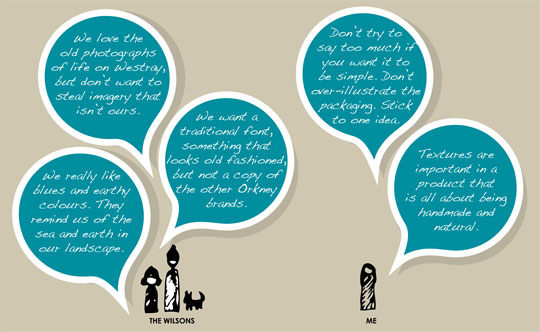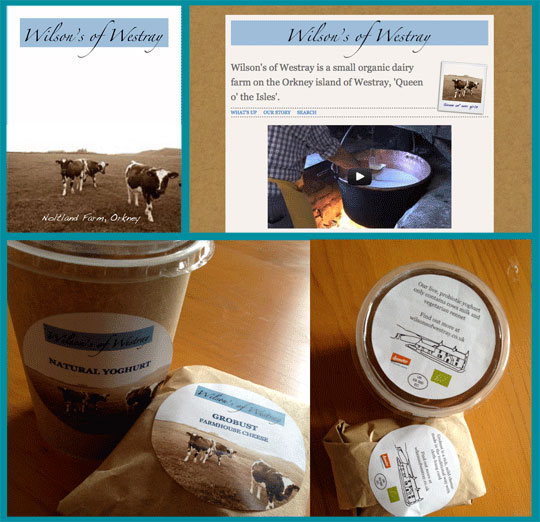I’ve worked as a user experience designer for large corporations and agencies for a few years now, and have found a lot of inflated terminology creeping into my vocabulary—alarming anyone who hasn’t ‘gone corporate’. So when I was asked to help a small Orkney Island dairy farm to sell their product, I had cause to rethink: do most of the phrases and practices we use actually mean anything to anyone but us?
I have no doubt that the service and UX design ethos works. How can you design something great for someone without knowing enough about what they actually want? User Experience practitioners have learned that it’s not enough to focus on the point at which the customer hits a site and forget them once they leave. UX design is now united with service design in wanting to know what their customers had for breakfast—we want as much information as we can get.
However, there is an extensive range of methods we use to get this information, and those methods have names like ‘service safaris’ and ‘desktop walkthroughs’. Occasionally someone suggests a ‘service role play’, which—as a tortured ex theatre student—chills me to the bone. But for the most part, the principles stand firm.
In truth, for very small businesses, UX and service design practices would appear to be an impractical luxury. Consultants are expensive, and often don’t deliver what small enterprises need: a tangible end product in a short period of time. So I decided to test my bag of tricks on the small island of Westray in the Orkney Isles, with the aim of creating a brand, online presence, and packaging prototype to help a small dairy sell their cheese and maybe a yogurt or two. I wanted to find the steps that would work in an informal, rapid process. I narrowed it down to six.
Step 1: Creating a Stakeholder Map
The Farmers
The Wilsons are the husband-and-wife team who own Noltland farm. They are dedicated to organic farming and the welfare of their herd. Their feedback was: “We want to make a good, organic product at a reasonable price and on a small scale.”
The Shopkeepers
There are three grocery stores serving the community on the island, and a larger number of stores and delicatessens on Mainland Orkeney. I summarized their needs as: “We can’t get enough local produce for local people and tourists alike.”
The Local Community
Westray is a small, farm-centric community of approximately 600 people who have a genuine interest in any local projects, collectively appearing to say: “We strongly support local produce and like to know about the farmers producing it.”
The Cows
Believe it or not, on an organically certified farm, the cows are stakeholders, as giving them a good life affects so many aspects of what you can do with the product.
Step 2: Going on Service Safaris
I explored a few examples of where the product could be sold to get an idea for its service context.
1) Noltland Farm
There are no plans to sell directly from the farm at present, but this was set as a future possibility.
2) Local shops
The stores on Westray sell local produce in amongst other national and international products. They are there to fulfill the everyday needs of the local community.
3) Stromness, Mainland Orkney
Delicatessens said that the local community and tourists alike would be looking for an artisan, local product.
4) Kirkwall, Mainland Orkney
Some shops sell heavily branded, pre-packaged Orkney produce to appeal to a broader range of tourists, while others cut custom sizes from an unpackaged wheel.
5) Mainland Scotland
Eventually the product may be sold in various stores in mainland Scotland, but this isn’t an immediate focus for the business.
3. Creating customer personas
Three customer personas evolved quite quickly, with a few small differences in their expectations of the product:
Local customers, who…
- Strongly support local produce
- Want something affordable to include in their weekly shopping
- Shop in Westray and Kirkwall
Deli customers, who…
- Have sophisticated tastes
- Have a wide range of products available to them, so are looking for something unique
- Shop on the main island and Mainland Scotland
Tourists, who…
- Have a range of tastes
- Want something that could travel reasonably well
- Expect the branding to reflect the location
- Have an idyllic view of the island and want that to be confirmed in the product
- Shop on all the islands and Mainland Scotland
4. Researching cultural influences
Traveling around the island, attending local events, and doing a bit of online research allowed me to get a view on the cultural aspects affecting the product.
Landscape
The landscape of Westray is central to its identity and a major draw for tourists. The spectacular sea cliffs, clean, sandy beaches, and treeless farmland influence the perception of the fresh and natural quality of its produce.
Notland Farm
The farm is unique. It sits across the road from a 16th century castle and spans down to Grobust beach, where there are a number of archeological digs in progress.
Local products
An archive of original packaging allowed us to see how Orkney dairy products were packaged over the past 100 years. Contemporary products include biscuits shaped like ‘The Westray Wife’— a Venus figure uncovered in one of the archeological digs on the island.
Historical legacy
Westray is known for it’s Neolithic and Bronze Age discoveries. I had the opportunity to talk to the local archeologists and Scottish heritage supervisors at one of the digs happening at the bottom of the farm. In addition, an archive of historical community photographs were available to browse.
5. Benchmarking
This phase was about finding out what the Wilsons considered to be best practice, as well as suggesting one or two benchmarks of my own. We narrowed it down to six.
Yeo Valley produces a good organic product and has made their packaging more environmentally friendly by using a thin plastic with a paper sleeve to reinforce it. However, the saturated packaging looked more commercial than what we were aiming for.
Loch Arthur makes the type of cheese that Wilson’s of Westray would like to produce. The Wilsons worked on the Loch Arthur farm and share farming philosophies with them. The Wilsons are also familiar with the packaging process, so a similar construction could be used.
Rachel’s Organic uses locally sourced milk and was Britain’s first certified organic dairy—large images of fresh ingredients communicate this.
Neals Yard Remedies may not be a dairy producer, but they communicate the tradition and purity we were after. They use glass bottles, misted embossing, and simple brown and black labels for product information.
Orkney Cheese and Grimbister are popular local products. They use illustration and local iconography to show locality.
6. Prototyping and Co-Creation
The Wilsons were involved throughout the process. As a part of this phase, we visited local printers and suppliers together to get a feel for packaging materials, as well as selecting landscapes and views for me to photograph. As I designed, I printed, cut, and stuck pieces together to make prototypes of the packaging, and allowed them to look over my shoulder as we tried different fonts and colors. I coded their blog and they reviewed it as it came together. They were very supportive and collaborative, so it worked far better than you might expect!
Traditionally this would be part of the briefing stage in a project, but I responded with prototypes as we worked.
Outcomes
By the end of the process we found that all six phases had taught us something valuable:
Stakeholder maps showed us that ‘organic’ is important and ‘local’ is essential.
Service safaris told us that the packaging needed to wrap custom sizes, come pre-packaged, and travel well. As well as looking like a staple product, it must also reach the expected sophistication levels of deli and international customers.
Customer personas indicated that artisan cheeses could command higher price tags, especially if they are viewed as unique to Westray. Additionally, the local community’s approval will be a priority.
Cultural influences made me think that the packaging needed to reflect the scenery and historic nature of Orkney and make reference to Noltland farm.
Benchmarking sent out a clear message that, to read as organic and natural, less is more.
Prototyping and co-creation showed that tradition is important. Good materials and blues and browns should be used, and the cows and farm should take center stage.
As a result…
The branding includes a simple and adaptable logo, representing tradition, serenity, and elegance. The product imagery was designed around the sepia photography The Wilsons had admired from the local community archive, but we made it more personal by including cows from their herd and showing Noltland in the far distance. The strong horizon line emphasizes the famous treeless landscape of Westray, and handwritten captions put the photographs in context and make them appear slightly more personal and handmade.
As the local community was so important, I felt a blog was the most appropriate type of digital presence. It serves the purpose of sharing progress with the local community before the product hits the shelves.
The operation is a small one, so the product packaging was designed to be cost effective and adaptable to an expanding product range. Circular labels can be used for different sizes and containers, and brown paper can work as a sleeve for the yogurt pot and to wrap varying sizes of cheese—and imbues a sense of nostalgia. The name of the product will be stamped on in ink, which will create the texture and artisan element we were after.
Conclusion
A lot of what I do in the corporate world is about helping businesses formulate a clear vision of what they actually want to say about themselves. They often only know that they want to sell more and are so far removed from who they are and what their customers think that it takes a massive effort by UX professionals, through multiple exercises, to get the clarity they need.
So with the Wilsons I was in luck. At the heart of this project is their clarity of vision that their product will always be about quality over quantity; local over global. They actually knew many of their customers from living on a small island with them and enjoying the conversational relationships that are formed as a consequence. It took only a few small steps to get to where they wanted to be.
Their first cheese and yogurt are due to launch in spring 2013. In the meantime, you can read more about their journey on their new website.


